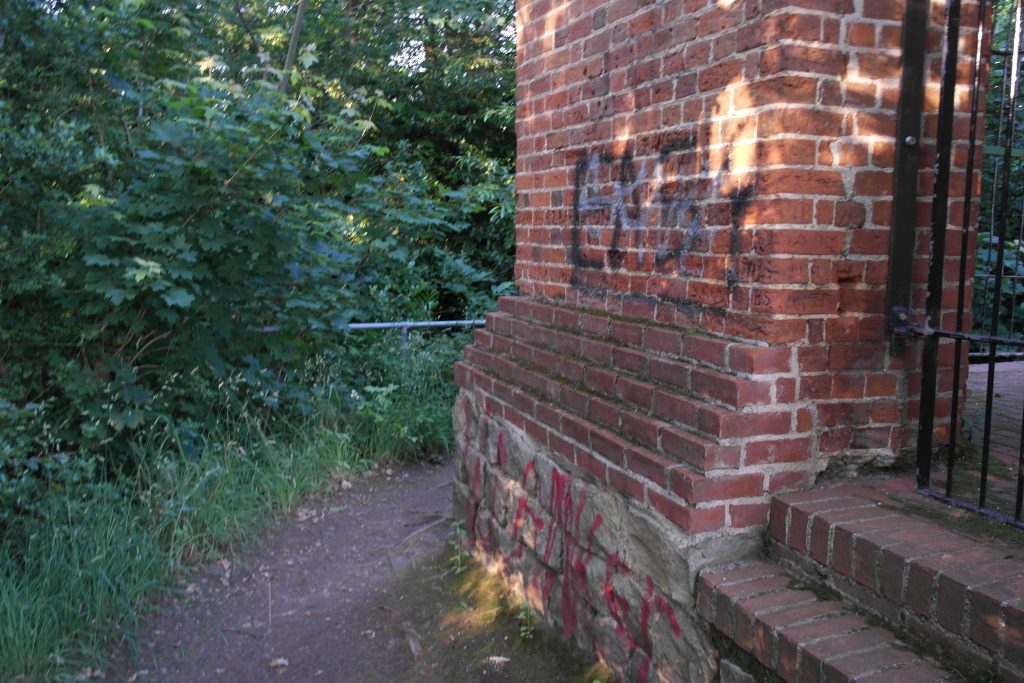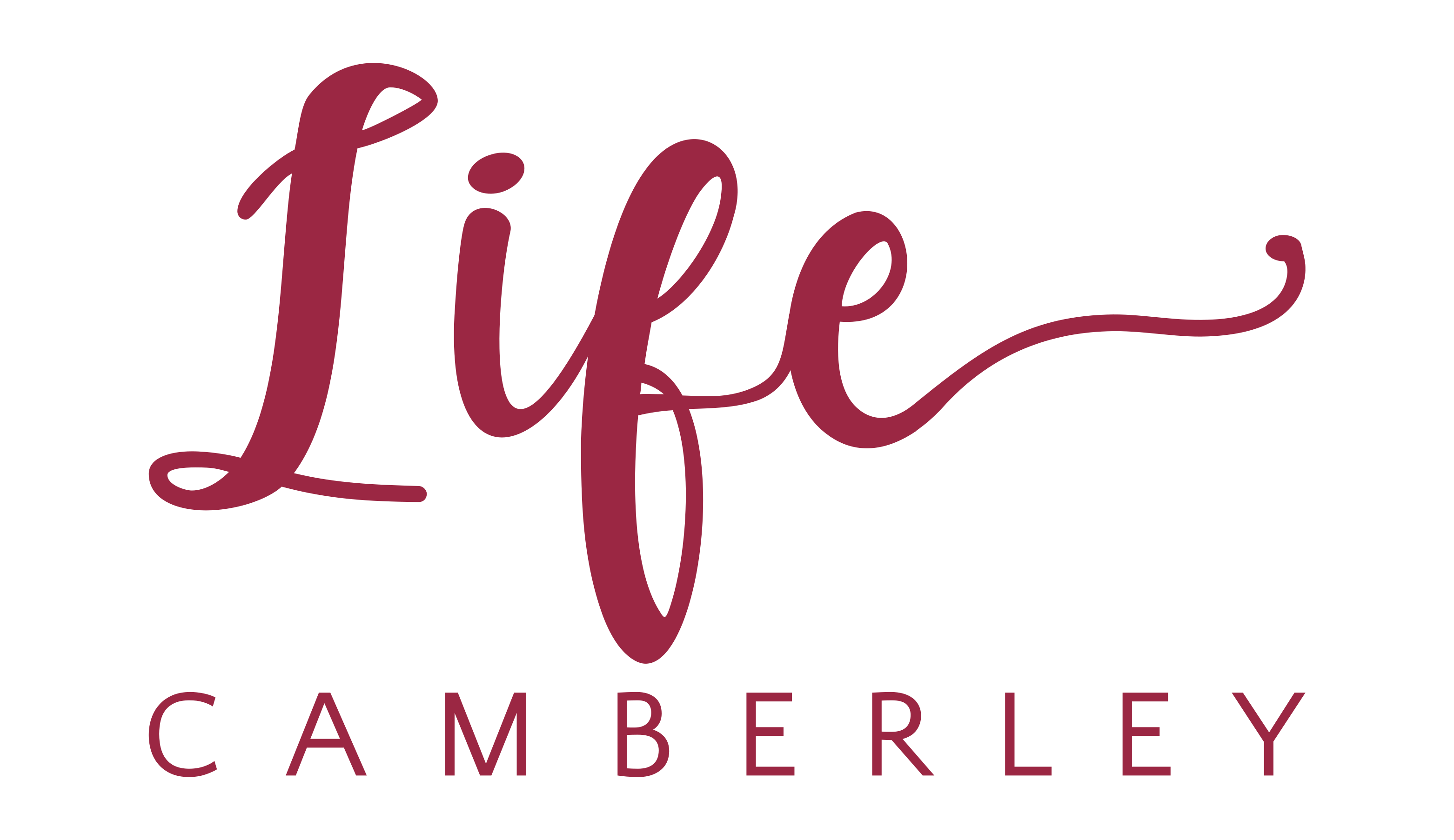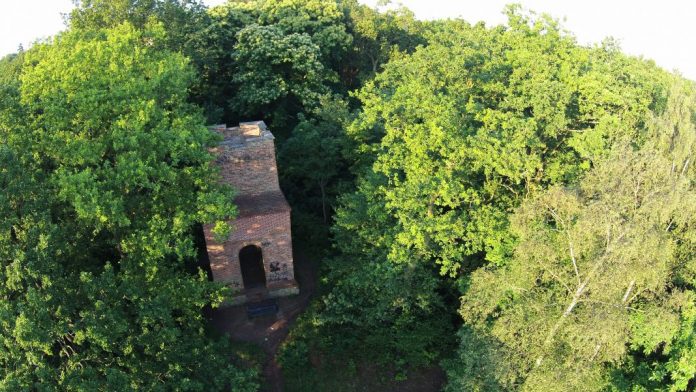Camberley Obelisk (also known as Norris’s Obelisk or Norris’s Whim) is a brick tower at the top of a hill in Camberley, Surrey.
The tower was built by John Norris (1721–1786) in about 1765–1770. The top section of the tower was destroyed by fire in the early 1880s. It is a Grade II listed building.
Although known as an obelisk, the structure is in fact a square tower, made of red bricks. It is built on the top of a wooded hill in Camberley Park, about 200 yards (180 m) east of Camberley town centre.
The tower originally comprised several stories, and is estimated to have been about 100 feet (30 m) in height. However, the top part of the tower was demolished in the late 19th century, and it is now only 30 feet (9.1 m) high. The walls are up to 5 feet (1.5 m) thick.
There was originally a wooden staircase inside the tower, allowing access to the top, the inside of the tower is now empty, and all the entrances have been closed off with iron grids.
The structure occupies rising ground close to the A30, once the main turnpike road from London to Exeter. It was built in around 1765-70 by John Norris of Hawley Place, about 2 miles away to the west. The surrounding area was then open heathland, and on a clear day it was possible to see for many miles. Camberley itself did not then exist, and the Obelisk was a notable landmark, as early maps show.

In 1812, the Royal Military College (now RMA Sandhurst) opened and a small settlement grew up at its gates. This later became known as Yorktown after the Duke of York, Commander-in-Chief of the Army. Cadets from the College had to include the Obelisk in their surveying exercises, and over the years many of them carved their names into the brickwork. Later, local landowner Charles Raleigh Knight developed land at the gates of the new Staff College, which opened in 1862. This new development was known at first as “Cambridge Town” but changed its name to “Camberley” in 1877, to avoid confusion with the university town of Cambridge. The new name was made up from “Cam” after the River Cam, which flowed past the Knoll, “Amber” Hill, a local landmark and “ley”, meaning a clearing. Obelisk Street (now Obelisk Way) is part of the original Cambridge Town street plan, and got its name because of the clear view it offered of the tower.
Norris’s son, also called John, was keen to protect his rights to the tower. When the local Common was enclosed in 1801, this area was awarded to his fellow-landowner James Laurell of Frimley Park. Norris swapped four acres of farmland in Frimley for the land around the Obelisk.
The earliest actual picture of the Obelisk which has come to light so far is “Norris’s Whim”, a charming, slightly romanticised watercolour in the British Museum, painted by the artist John Hassall in 1822. “Paterson’s Roads”, an early travel guide, includes this description: “Blackwater, before, a remarkable Obelisk, visible for many miles round, and on a fine day, with a telescope, clearly discernible from Hampstead Heath” (1828 edition).
Over the years the tower began to fall into disrepair. Photographs from around 1870 in the collection of Surrey Heath Museum show it in a lonely position on the crown of the hill with only a few pine trees nearby. Sadly, in the early 1880s some travellers lit a fire in the tower, apparently using wood from the staircase. The structure caught fire, and for safety reasons the top section had to be demolished, reducing it to its present height. As houses and trees grew up around it, the ruin became a well-hidden secret in the grounds of “The Knoll”, a Victorian house which later became a school. The opening of the new Camberley Park in the Millennium Year means that the remains of this Grade II listed structure can be seen by the general public once again.

Why was the Obelisk built?. Many suggestions about the Obelisk’s purpose have been made over the years. One theory is that it was some sort of signalling tower. Signalling towers were used in the late 18th and early 19th centuries as a way of passing urgent official news. A surviving example is Chatley Heath Semaphore Tower, built around 1820. However, the semaphore system only dates from about 1800, by which time The Obelisk was already over 30 years old.
Signals could also be sent by heliograph, a system which used sunlight and reflectors. In the absence oil-lamps or candles were used, both something of a fire risk. There is some suggestion that Norris himself referred to the Obelisk as a heliograph.
Nearly 20 miles away, on the top of West Wycombe Church tower, there is a strange structure: a golden sphere, with seating inside for several men. This was built in 1751 by Sir Francis Dashwood, who was a friend of Norris.
Over the years, a local legend grew up that The Obelisk and West Wycombe’s tower were part of a private signalling system between the two men perhaps used to relay bets.
Although this idea has been repeated in several histories, no firm evidence has come to light.

Many other suggestions have been put forward. Some believe that it could have been a watchtower to warn against highwaymen, other, that it was a viewing platform from which spectators could follow the local hunt, or a beacon tower to guide weary travellers and huntsmen home across the heath. It would certainly have given a good view of the Great Military Camp held on Bagshot Heath 1792, when 5000 troops spent the summer under canvas. On the day that King George III reviewed the troops 150,000 horsemen were present, so the spectacle must have been visible for many miles. Finally, the Obelisk could have just been a rich man’s folly, as the name “Norris’s Whim” suggests.
For further information and copies of the booklet “Camberley’s Mysterious Obelisk” by Gordon Wellard, please contact Surrey Heath Museum on 01276 23771






